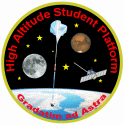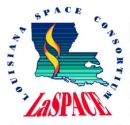



Payload 10 Information
Payload Flight Number:
Institution:
Payload Title:
HELIOS IV
Student Leader:
Faculty Advisor:
Payload class:
Large
Payload ID Number:
10
Mass:
16.5 kg
Current:
1960 mA
Serial Downlink:
Yes
Analog Downlink:
No
Serial Commands:
Yes
Discrete Commands:
No
Payload Specification & Integration Plan
Due: 06/26/2015
Delivered:
Payload Integration Certification
Scheduled: 08/07/2015
Actual:
Flight Operation Plan
Due: 08/03/2015
Delivered:
Final Flight / Science Report
Due: 12/11/2015
Delivered:
Abstract:
HELIOS IV shall observe the Sun in Hydrogen-Alpha wavelength. Observations in this wavelength from the ground are hindered by atmospheric interference. HASP will ascend above 99.5% of the Earth’s atmosphere, eliminating this issue. The HASP platform offers a low-cost alternative for solar observations. Additionally, the HASP platform has an extended float time that will give the payload more time to observe the Sun than a regular high altitude balloon flight. This is a re-fly of the University of Colorado’s 2012, 2013, and 2014 HASP teams’ missions, HELIOS I, HELIOS II, and HELIOS III. HELIOS IV is attempting to re-fly the mission to overcome the technical issues that hindered the HELIOS III team as well as improve upon the science results. HELIOS IV will focus on improving the Optics, Attitude Determination and Control System, and Electrical Power System of HELIOS III. HELIOS IV aims to improve the reliability of these three systems, and utilize the full float operations capability of the HASP Platform. Due to the weight and size of the HELIOS IV payload, a large payload seat is necessary for this mission.
Payload Integration Plan:
Science Report:
|